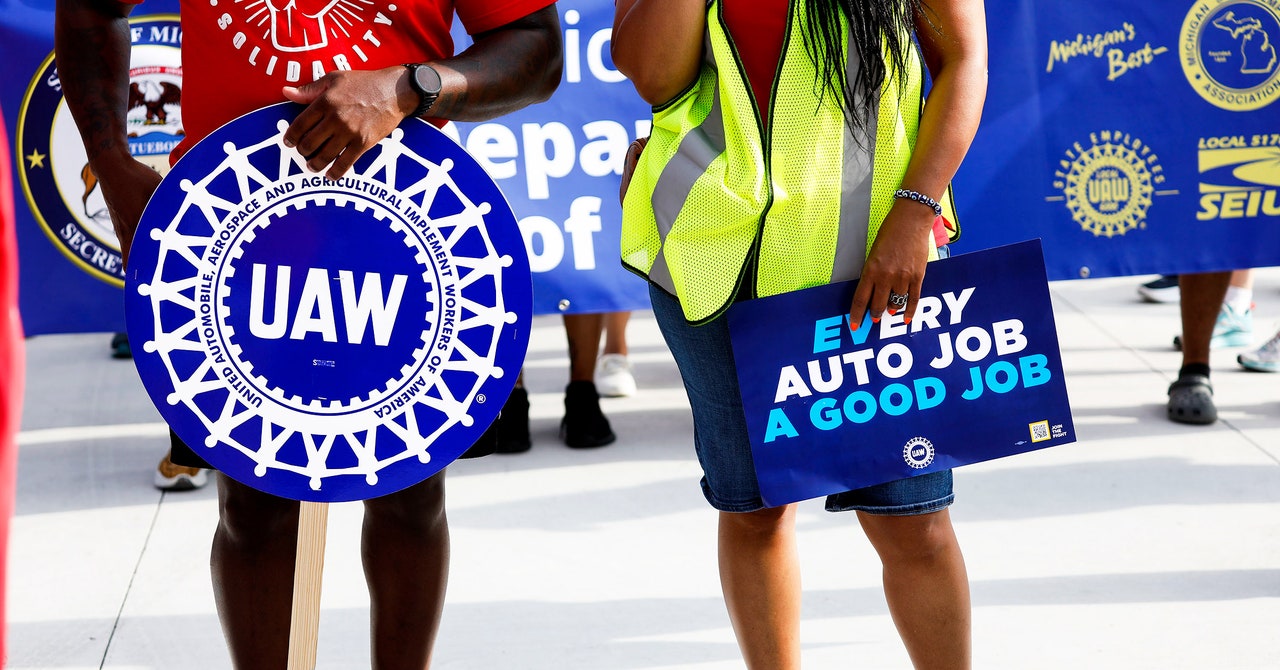Like GM, Ford and Stellantis have launched their own joint EV battery ventures with South Korean electronics companies. The UAW says the new businesses are offering jobs with lower pay and safety protections than at established unionized auto plants. Last month, the recently unionized Ultium workers inked an interim agreement to raise wages by an average of 25 percent, but the union wants to bring battery plants to the same standards as at the Big Three. Experts say that may be a tall order, but a strong contract could help win over new workers and reverse a decades-long decline in the union’s membership. The future of US automotive jobs may depend on it.
“The combustion engines used to be built within the Big Three,” says Harry Katz, a professor at Cornell University’s School of Industrial and Labor Relations. “Now you have batteries that are not coming from within the Big Three and being assembled and developed by workers making lower wages and benefits. That’s a real problem. The UAW has got to find a way to try and organize those domestic battery plants.”
Marick Masters, a professor at Wayne State University’s Mike Ilitch School of Business, calls the UAW’s fight to organize the producers of EVs and their components “existential” for the union, noting that about 60 percent of US auto manufacturers and parts suppliers were unionized in the early 1980s. Now that number hovers around 16 percent.
Some assessments reckon that producing EVs, which have fewer moving parts than gas-powered vehicles, requires fewer workers. Ford’s CEO said last year that EVs would require 40 percent less labor, while a recent study from Carnegie Mellon University found that battery electric vehicles actually require more labor due to the requirements of battery pack manufacturing.
Either way, without significant growth in domestic EV production, US automotive jobs will likely decline, particularly if the White House realizes its goal of EVs representing 50 percent of new car sales by 2030. A 2021 analysis by the Economic Policy Institute, a pro-labor think tank, estimated that without policy intervention, meeting that goal would cost the US auto industry 75,000 jobs, since the majority of EV powertrain components are produced and assembled elsewhere.
If policy measures spurred a significant increase in the US market share of EV assembly and production, then the industry could add 150,000 jobs, the researchers estimate. But many of those jobs won’t be in traditional UAW-unionized plants. Foreign transplants like Honda and Toyota and EV companies like Tesla have long resisted unionization. “I think that has provided a model to other EV manufacturers in this country, who, even if they wanted to, can’t avoid looking at Elon Musk’s example,” says Jason Walsh, executive director of BlueGreen Alliance, a partnership between labor unions and environmental groups.
The Inflation Reduction Act (IRA) passed in the US last year offered up billions of dollars of loans and tax breaks for onshoring and reshoring EV manufacturing jobs. But it included no labor standards or wage requirements for the recipients of those funds. “There have honestly never been more federal resources available to help automakers build the vehicles of the future,” says Walsh. “Auto manufacturers can’t be allowed to use this historic shift as a smokescreen to drive down job quality.”
Read the full article here





